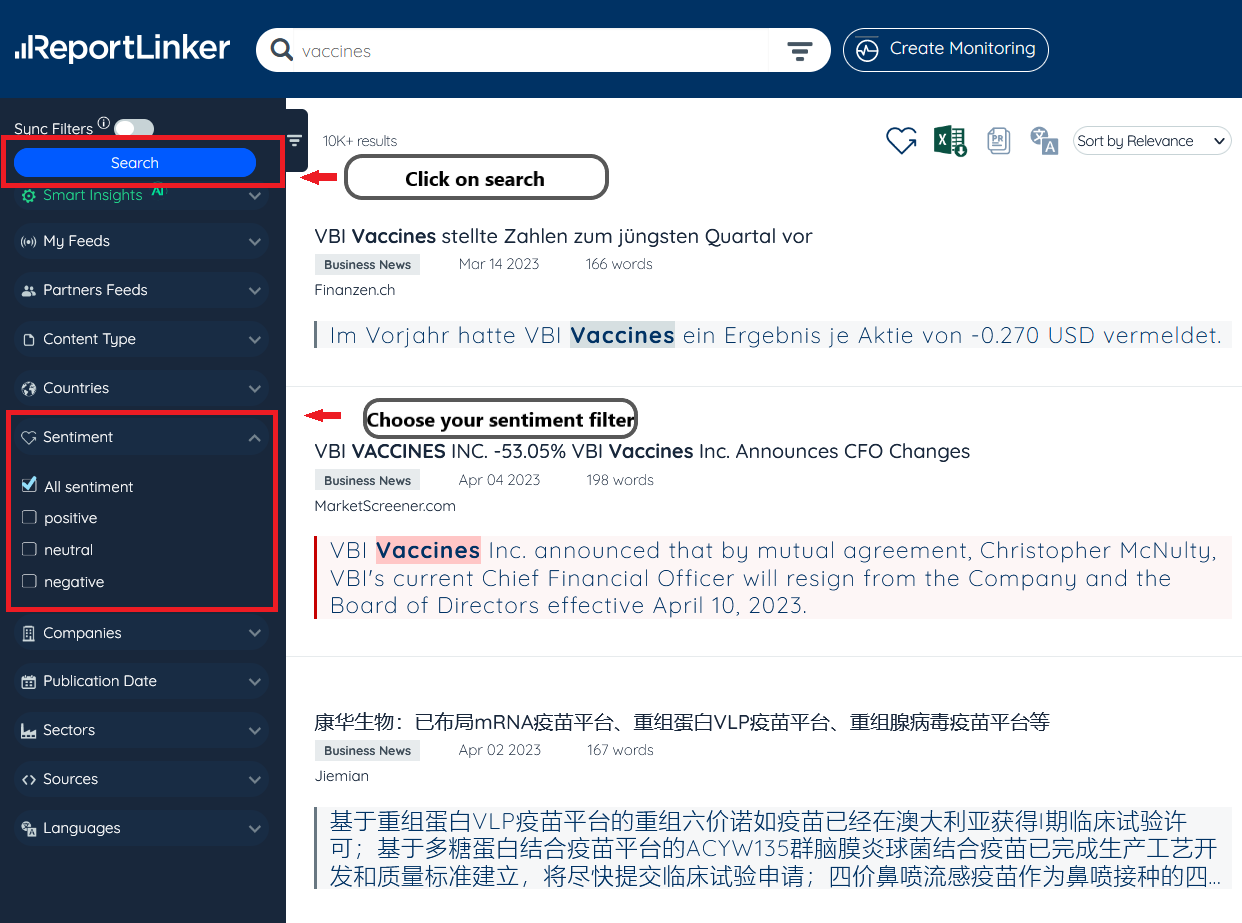In this article, you will find answers on how sentiment analysis works and how it helps you to understand your search results.
Sentiment analysis helps you understand the data related to your search by attaching it to a sentiment.
Sentiment analysis is built with machine learning models which highlight and give them a score based on a specific lexicon in the information. In other words, sentiment analysis looks for information that analysts usually search for and groups them into three main categories (sentiments). The results may be considered: positive, neutral or negative.
Sentiments are positive, neutral or negative information about a company, market or industry. This type of analysis highlights information that that has been scored positively, neutrally or negatively based on your search terms.
First of all, you can filter by sentiment. If you click on a specific sentiment in your filters and then select search, the results will be updated and a filter automatically set for that sentiment.

Positive: a positive sentiment is represented by the colour green which means that the search results contain positive information. This may enable you to spot trends and see positive updates in the market and industry.

Neutral: a neutral sentiment is highlighted by the colour grey and represents information that is has not been scored neither very positively nor negatively.

Negative: a negative sentiment is shown in red indicates that the information shown contains negative information. This may help you to identify potential risks to the industry or business.
